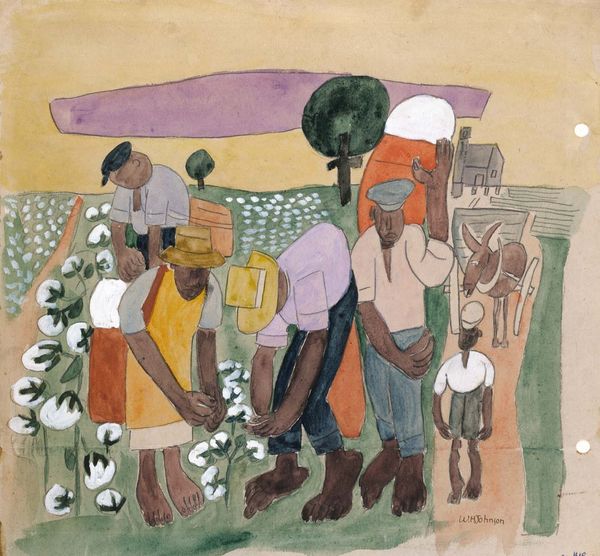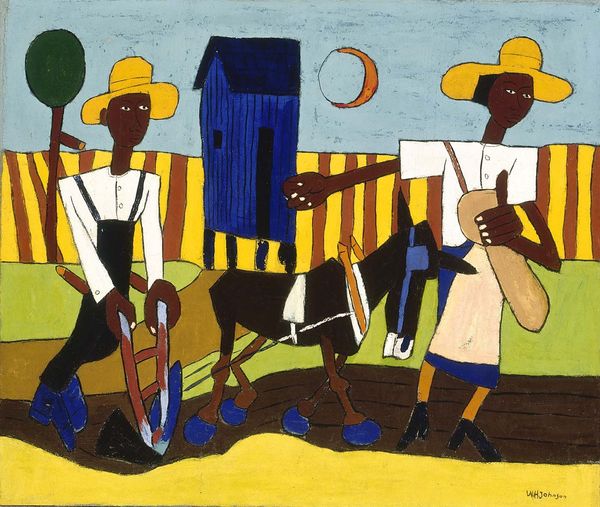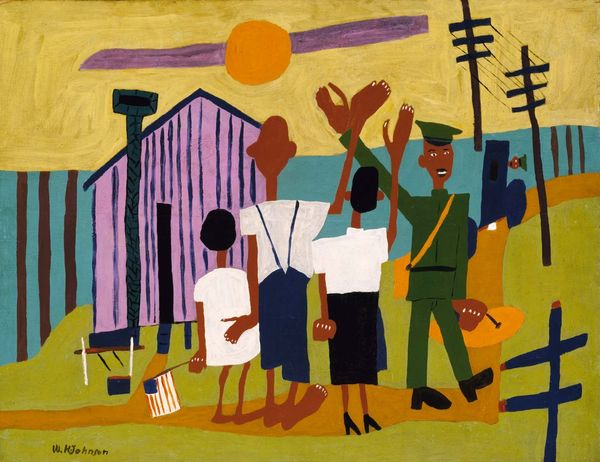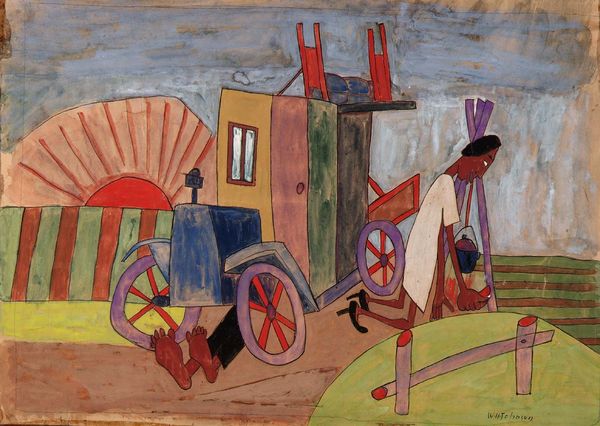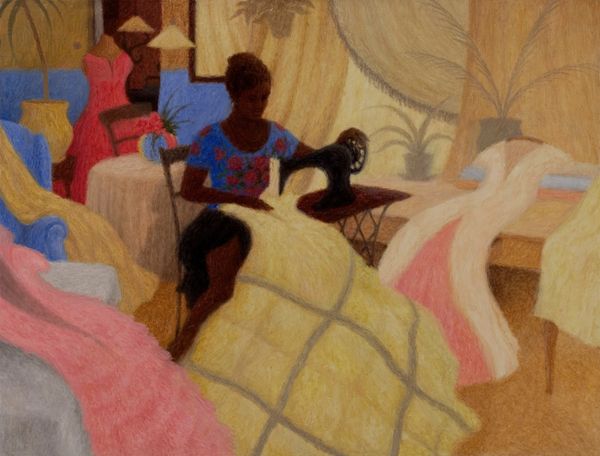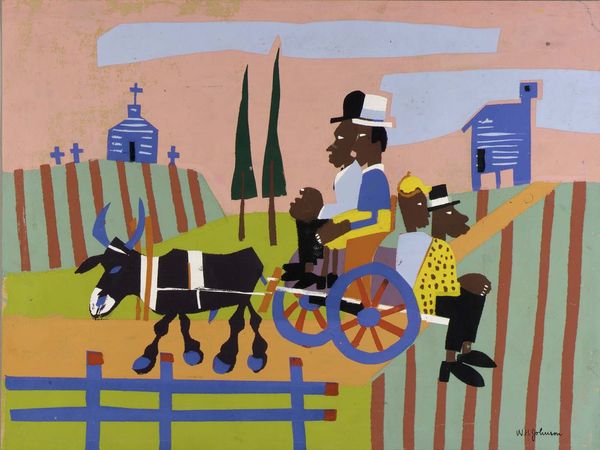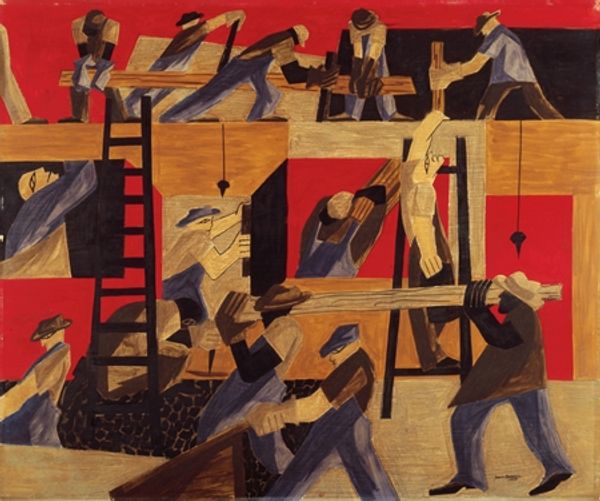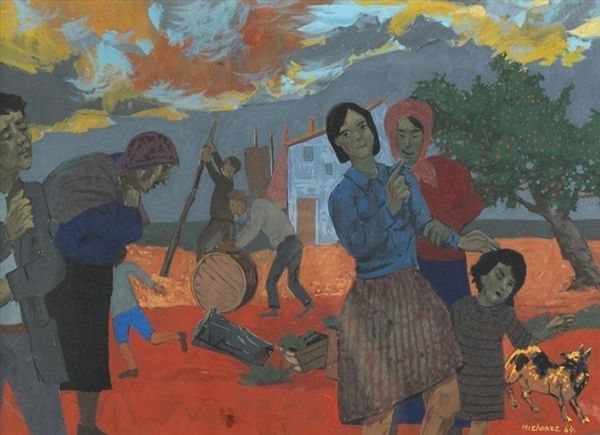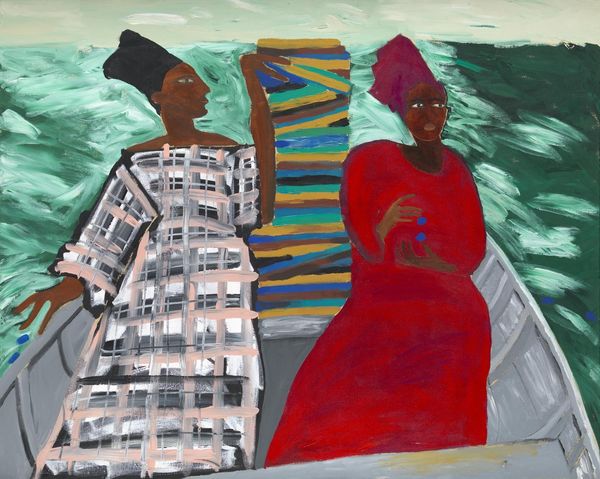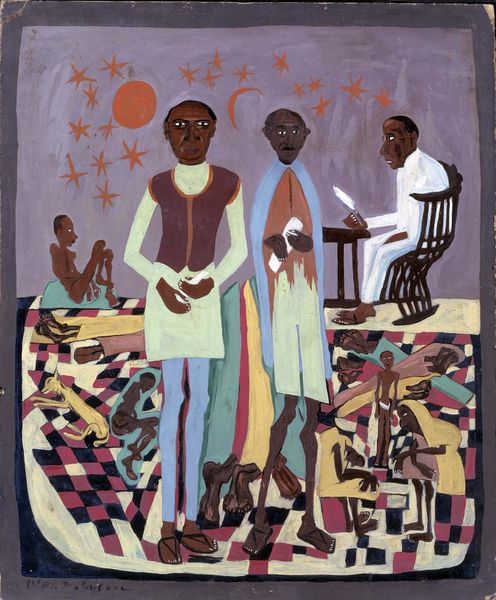
painting, watercolor
#
portrait
#
african-art
#
narrative-art
#
painting
#
landscape
#
harlem-renaissance
#
figuration
#
social-realism
#
watercolor
#
naive art
#
watercolour illustration
Copyright: William H. Johnson,Fair Use
Editor: William H. Johnson's watercolour painting "Farewell" from 1942 presents a very distinct, simplified figuration in its characters and landscape. I'm struck by the directness of the figures' gazes and the ambiguity of the setting... How do you interpret this work, especially given its historical context? Curator: Considering Johnson’s work, especially "Farewell", within the context of the Great Migration and the Harlem Renaissance offers some profound insights. The stylized figures and somewhat flattened perspective evoke a sense of both displacement and resilience. It brings up issues of racial identity, family separation, and the complexities of the African American experience during this period. Do you see any visual elements suggesting that experience of transition and societal pressures? Editor: Definitely, I notice the train, billowing smoke in the background... the figures standing near the railroad tracks as if to travel? Curator: Exactly! This symbolizes movement, but also perhaps the hope for a better future in the North, away from the Jim Crow South. Johnson doesn’t shy away from addressing difficult topics head-on through symbolism and this unique artistic lens. It can also evoke questions of national belonging, as can be interpreted in relation to the stars-and-stripes billowing from the train in the background. Editor: The 'naive art' style initially led me to view it as merely aesthetically simplistic, but it seems the visual style serves a deeper narrative about community. Curator: It’s this intersection of folk art elements with social commentary that makes Johnson's work so powerful. The simplicity allows the emotional weight of the scene to truly resonate with the viewer. It invites questions rather than providing easy answers. Editor: It's really fascinating to unpack these historical and social contexts within what at first glance seems to be just a quaint and even 'primitive' depiction of everyday life. It's clearly not. Curator: Exactly. Recognizing how Johnson incorporates these cultural touchstones elevates our understanding and allows for richer dialogues about identity and representation.
Comments
No comments
Be the first to comment and join the conversation on the ultimate creative platform.
